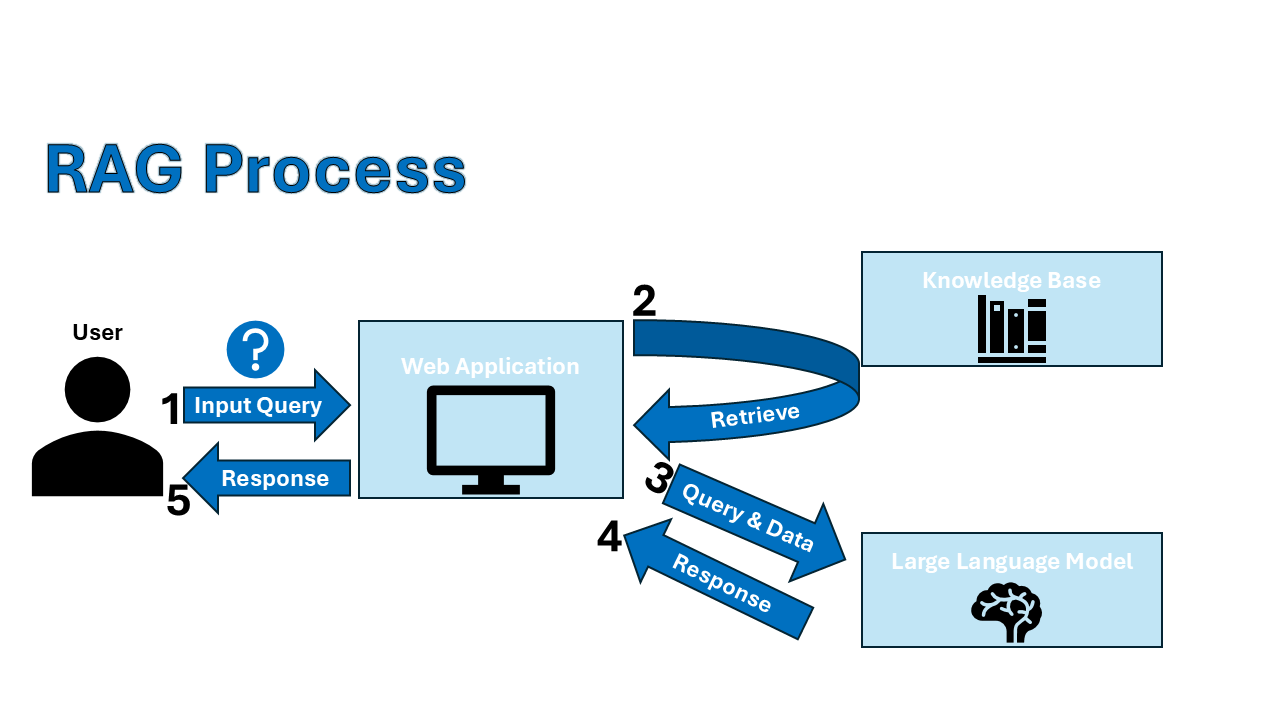Retrieval-Augmented Generation (RAG): The Game-Changer Your Enterprise Needs for Smarter, Real-Time AI#
Artificial Intelligence (AI) is moving at a breakneck pace, and Retrieval-Augmented Generation (RAG) is one of the latest technologies reshaping how enterprises and organizations use AI. As revealed at the AI4 2024 Conference in Las Vegas, this approach empowers companies to overcome the limitations of standard language models by combining real-time data retrieval with generative outputs, making AI applications more accurate, context-driven, and relevant.
In this blog post, we’ll delve into how RAG works and highlight several real-world applications discussed at AI4, offering a glimpse into how various industries are embracing this cutting-edge technology.
What Is Retrieval-Augmented Generation?#
RAG supercharges the capabilities of Large Language Models (LLMs) by integrating external data sources into the generation process. Instead of relying solely on static information from training data, a RAG system retrieves live, relevant documents or databases and augments the AI’s response with this updated context. This dynamic capability is especially critical in sectors where real-time accuracy and data privacy is crucial, such as healthcare, finance, and enterprise automation.

RAG in Enterprise Applications: Key Use Cases from AI4#
At AI4, multiple speakers showcased the vast potential of RAG for businesses. Below are a few notable use cases from the conference:
1. Generative AI in Enterprise Automation
One of the panel discussions at AI4 highlighted the low-hanging fruit in enterprise applications for RAG, focusing on how it could automate repetitive tasks. For instance, RAG-based systems can generate insights from unstructured data—like emails, documents, and internal communication—by pulling relevant information from databases and automating processes such as tagging and data categorization.
Incorporating RAG into automation workflows, as emphasized by panelists, helps businesses become more operationally efficient and improves customer satisfaction. These applications are vital as enterprises continue to scale up their AI adoption.
2. AI-Driven Research Assistants in Healthcare
During the A14 conference, AMGEN, a biotechnology company focused on human therapeutics, demonstrated how their AI system, ATOMIC (Analytical Trial Optimization Module), uses RAG to enhance clinical trial predications by pulling relevant data from various sources. ATOMIC uses a combination of real-time external data retrieval and generative models to assist scientists in predicting participant enrollment for clinical trials, ensuring a broader range of trial sites.
This tool showcases how RAG can streamline research processes, allowing scientists to make data-driven decisions faster and more accurately. As more companies embrace AI for research and development, RAG will become increasingly important for staying competitive.
3. Virtual Assistants in Corporate Workflows
As Matheen Raza from NVIDIA pointed out, companies often face challenges with training large AI models due to a lack of domain-specific data. RAG offers a way to overcome this barrier by connecting pretrained language models to internal knowledge bases, enabling virtual assistants to provide real-time insights based on the latest available data. These assistants are not only able to answer queries but can also perform complex tasks, such as managing workflows and offering employee assistance.
This use of RAG opens up a future where employees can focus on creative and strategic tasks while virtual agents handle time-consuming research, organization, and decision-making support.
Addressing Challenges with RAG Implementation#
While the potential of RAG is significant, there are challenges in implementation, as highlighted by several speakers at AI4:
Data Security and Privacy: When incorporating RAG into workflows, businesses must ensure that data retrieval processes comply with privacy regulations. Secure data pipelines and proper governance are crucial to maintaining trust and safeguarding sensitive information.
Infrastructure and Expertise: Transitioning from proof of concept (POC) to full-scale production requires robust infrastructure and skilled personnel. Upskilling employees and investing in specialized AI infrastructure are necessary steps for successful RAG adoption. Addressing these challenges head-on, SHR's skilled engineers are at the forefront of deploying GenAI capabilities tailored to our customers' unique enterprise needs. By building secure, scalable infrastructures and integrating RAG solutions, our team is enabling the power of real-time data while maintaining the highest standards of privacy and operational efficiency. With deep expertise, we are helping our clients transition from proof of concept to full-scale, production-ready AI solutions that drive real-world impact.
The Road Ahead for RAG#
The takeaway from AI4 is clear: RAG is not just a trend but a foundational technology that will shape the future of enterprise AI By allowing companies to augment their generative models with real-time data, RAG enables better decision-making, enhanced efficiency, and improved customer experiences. As we look forward to further innovations in the AI space, RAG will undoubtedly play a pivotal role in transforming how businesses operate across industries.
